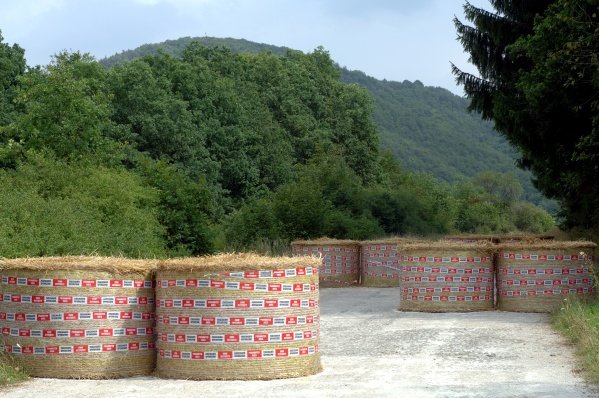The “Least Bad” Option?

When the news broke about a month ago about the possible introduction of “virtual chicanes”, my first instinct was to tear into the WRC with a strongly worded piece about how they were destroying the essence of rallying. In reality, however, it would have ended up being an angry tirade that offered little more than a long-winded gripe. In the weeks since this idea was introduced, I have had a chance to give the issue a proper think-over and maybe contribute something constructive to the discussion. I figured that this down-time over the holidays would be a good time to revisit the issue.
In case you’ve been living under a rock, here’s a brief explanation of the virtual chicane idea. Until now, rallies have used hay bales or some other object to create an artificial chicane in an effort to slow average speeds on stages. Unfortunately, rallying is stuck in a place where insurance underwriters have no way to quantify the safety of a rally other than the average speeds of the stages. It’s a flawed system at best that has led to issues over the years with stages being cancelled or negated when the winning time exceeds the “bogey time” which is the maximum average speed for the stage to be considered “safe”. The virtual chicane has been proposed as an alternative where “slow zones” or “stop zones” are created within the faster sections of a stage to keep the average speeds down.
As I see it, this idea came out of two issues that were brought to light during Rally Australia. First, when a car blows the chicane and moves the hay bales out of the way, it creates an unfair advantage for the cars running behind. Also, as we saw with Sebastien Ogier in Rally Mexico this year, it creates a controversy regarding the car that cut the chicane possibly gaining an unfair advantage as well. Secondly, when the hay bales are moved, they need to be fixed, and that led to the disturbing incident where Andreas Mikkelsen came across a tractor in the middle of a live WRC stage and then crashed 2 corners later. Having virtual chicanes would in theory fix both of these problems. Believe it or not, rallying is not the first form of motorsport to attempt something like this. Back in 2015, the Nurburgring 24 hour sports car race placed speed restrictions on certain sections of the track to try to make the race safer. This was in response to a fatal accident when a Nissan GTR flew into a crowd of spectators during a warm-up race to the 24 hour event. Also, speed controlled zones within special stages have always been a part of cross country rallies such as the Dakar.
So… does it make sense? As much as I hate to say it, yes… on some levels, this idea makes sense. On paper, it seems like the easiest and safest way to satisfy the average speed limits for stages. Despite this, forcing a rally car to slow down or stop in the middle of the stage to achieve an arbitrary average speed measurement just doesn’t seem right. That’s not what rallying is about, especially the WRC which is supposed to be the pinnacle of the sport. So, if real chicanes are too unsafe and virtual chicanes are too fake, is there any solution out there? I think there may be one, and while it is not the most ideal solution, it may be the “lesser of two evils”. We’ve always been clamoring for longer stages in the WRC. However, one way to fix this average speed problem is to neutralize a long fast section of road by splitting the stage into 2 sections with a short transit in between the finish and start controls. By eliminating the fast section of road and turning it into a short transit, the average speed of the 1st stage could be brought down to an acceptable level. In addition, with the cars starting the 2nd stage from a stand-still, it should also fall within the average speed requirements. No, it’s not ideal because it breaks up the flow of the longer stages. However, it would be accomplishing the same average speed reduction that a slow-zone would, but in a way that is more true to the character of the sport. I don’t know about you, but I’d rather see two flat out 10km stages run back to back with a 1km transit in between instead of a 21km stage with a 1km slow-zone or complete stop stuck in the middle. Don’t get me wrong… neither situation is ideal for the sport, but if rallying is being forced to abide by arbitrary average speeds, this might be the best (or least bad) solution. If it means that we still get to see world rally cars going flat out over Ouninpohja without stopping in the middle of a live stage, albeit in 2 or 3 shorter sections, I’d take it.
Or… as another idea, let’s just make the next generation of world rally car RWD! That might solve the problem too! :-)
What do you think? Would you sacrifice the longer stages to prevent the introduction of slow-zones? Do you have another idea to get around this problem? How do you see this issue being resolved in the coming years?



